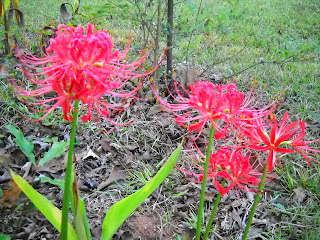My daddy often mentioned shoe-make, a shrub I later learned as sumac. He was not concerned with the beautiful red autumn leaves of sumac, nor even with the crimson berries of staghorn sumac. His interest lay in avoiding poison sumac, a plant that he and many others are violently allergic to. Poison sumac ( Toxicodendron vernix ) has berries of a white or dull gray, and it tends to fall into the background, where you may accidentally contact it when you least expect. Many people consider poison sumac the most toxic plant in the United States, worse than its cousins poison ivy and poison oak. If it is burned, the smoke taken into the lungs can cause edema and death. All parts of it are poisonous.
Staghorn sumac is not only beautiful in leaf and berry, but is a favorite food for birds. A word of warning here, though. Do not pick it and put it out for the birds to eat, else you will find it appearing in your flower beds and its eradication is not something to be taken light-heartedly. Above is a picture of a sumac that grew in my flower bed for a couple of years as a result of my bird feeding activities. Once I realized its intent to consume this bed, I began eradication procedures:digging and herbicide. It took 2 years of constant vigilance to rid myself of it. Lesson learned-enjoy along the road side, don't bring it home.
Humans also like the taste of staghorn sumac when it is made into a wonderful lemonade. If you would like a recipe, here is a link to a good one.

.jpg)
.jpg)
.jpg)
.jpg)


.jpg)

.jpg)



.jpg)